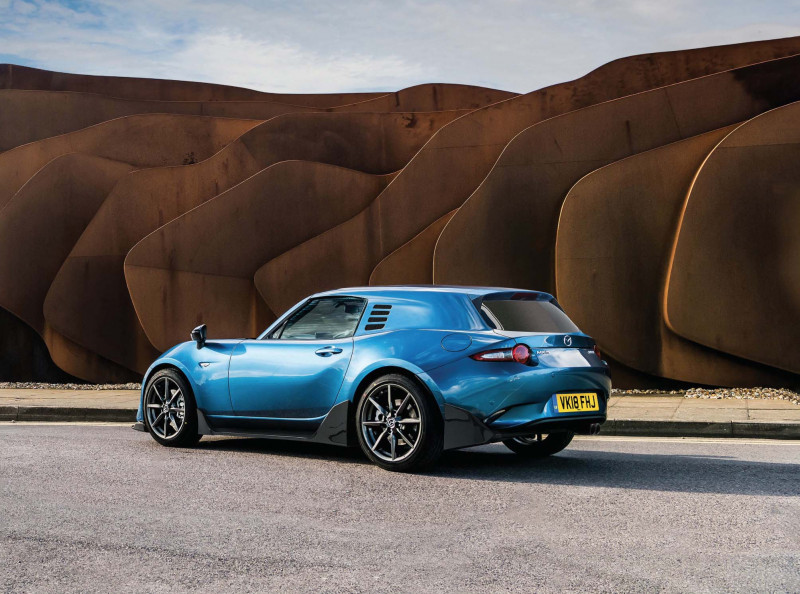Car that don’t exist, but should 2024 Mazda MX-500
Mazda builds a retro hero to pay homage to a lost rotary legend.
Sweet Dream
CARS THAT DON’T EXIST, BUT SHOULD
The RX-500 was a relatively obscure concept car, produced by Mazda in 1970, that was intended to be a working prototype for then cutting-edge road safety technology. Launched at the Tokyo Motor Show, the two-door coupe featured dihedral butterfly apertures for occupants, and gullwing openings to access the innards of the ‘breadvan’ styling which housed a 184kW twin-rotor engine.

While forgotten by most of the automotive community, MOTOR reader Aaron Plein remembers the RX-500, and this month’s honorary member of our Fantasy Product Planning Department wrote to us with an idea for a homage to the Japanese concept car that was so good that we couldn’t resist creating a visualisation and sharing it with you all.
The result is the MX-500, a showstopping concept car for Mazda to debut at next year’s Tokyo Motor Show, ahead of an extremely limited production run of road-going models. The MX-500 serves a dual-purpose, paying homage to the concept of the ‘70s, while providing the basis for a worthy farewell to the ND MX-5 ahead of an expected electrified next-gen model. Gone are all the folding mechanisms, replaced with a natural fibre-based shell that affixes to the top of the windscreen, joining the rear haunches. In fact, all the car’s exterior panels are replaced with a flax-based composite weave construction.
The Tokyo Moto Show concept will share its bodywork with the versions sold to the public, but with one major change to its powertrain. Instead of using a naturally aspirated four-cylinder, the MX-500 show car will use a hydrogen combustion three-rotor 20B. The brap is back, and the race-tuned unit will be capable of producing 350kW at an epic 9000rpm.
Now, that’ll never make it onto the road. So a year after its public debut, the MX-500 will be put into production with 350 units celebrating the MX-5’s 35th anniversary. The starting point for these hand-built limited-run models would be the GT RS. Using that variant’s improved brakes and suspension, the MX-500 will be powered by a 180kW version of its 2.0-litre naturally aspirated four-cylinder. This power bump will be achieved by fitting lighter and stronger forged internals, increasing the rev range, redesigning the intake system, and increasing compression. Along with the improved engine will be a full titanium Akrapovic exhaust to really amp up the acoustics.
Read on to discover how we’d make it all happen.
01. LIGHTER THAN LIGHT
Mazda’s iconic roadster is already a svelte thing, but the Japanese engineers can find areas to improve. Composite panels, as well as a lexan rear window will keep weight to a neat 1000kg. Owners will need to watch what they eat at lunch.
02. WHAT ABOUT MY TAN?
The MX-5 is famous for being a drop-top, but there is precedent for a fixed-roof variant. In 2004 179 versions of the NB were produced without a folding roof. Though the Roadster Coupe name was slightly confusing.
03. RETURN OF THE BRAP
American company SpeedSource would partner with Mazda to produce the concept car’s rotary engine. SpeedSource built the flame-throwing IMSA RX-8s, and has an extensive history fiddling with the Renesis family of engines.
04. DUCT FOR COVER
With extra power comes great (braking) responsibility. Lightening the MX-500 will help lessen the load on the car’s brakes, but more pace is inevitable. To assist in ensuring braking performance is undiminished, extra air will be channeled toward the discs. That scoop just behind the side windows will direct cooling air towards the rear units.
05. HANDLE WITH CARE
Both the concept and production vehicles will be constructed by hand by the same team that offers its bespoke restoration services. Bare chassis will be removed from the main MX-5 production line, with the rest of the car’s journey being handled by Mazda’s most experienced technicians. This will also allow the solid roof to be integrated into the chassis, improving torsional rigidity of the final product.


